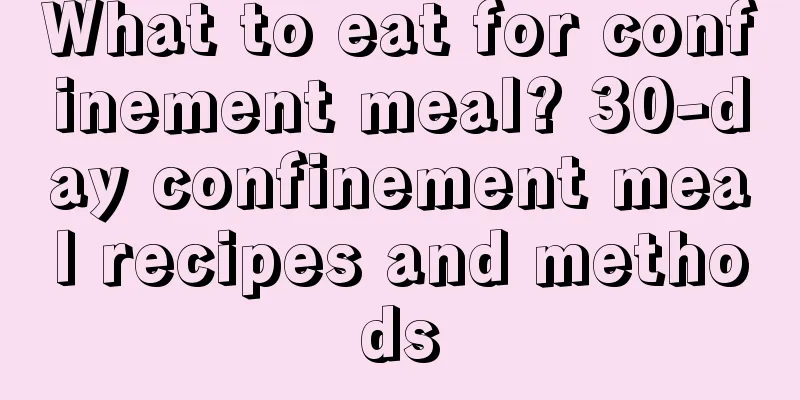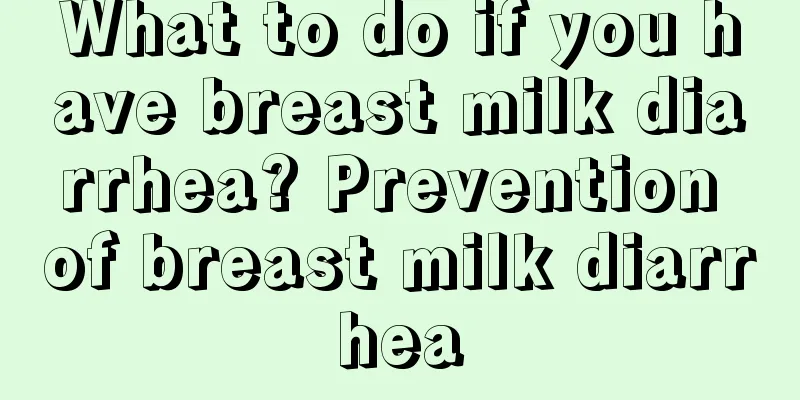Table of free vaccines for infants and young children. Notes on vaccination of infants and young children.

|
When babies reach a certain age, parents need to take them to the hospital for vaccination. Free vaccines are required by the state for every baby, while self-paid vaccines are given to babies based on the needs of parents. Free vaccination list for infants and young children1. Hepatitis B vaccine booster shot. If the baby is not vaccinated within 24 hours after birth, the first dose should be given priority. If the mother is positive for hepatitis B antigen, the baby needs to be vaccinated with the second and third doses in time. When booster shots are given, the interval between the first and second doses should be ≥28 days, and the interval between the second and third doses should be ≥60 days. 2. BCG booster vaccination. If the vaccination is not timely within 24 hours after birth, priority should be given to arranging vaccination. Children under 3 months old who have not been vaccinated with BCG can be directly boosted; children aged 3 months to 3 years old who have a negative test for tuberculin purified protein derivative (TB-PPD) or BCG protein derivative (BCG-PPD) should be boosted; children ≥4 years old are not boosted. 3. Polio booster vaccination. Children under 4 years old who have not received 3 doses should receive 3 booster doses, and children ≥4 years old who have not received 4 doses should receive 4 booster doses. The booster vaccination should follow the immunization schedule of first administering the inactivated polio vaccine and then the live attenuated polio vaccine, with the interval between the first three doses being ≥28 days. Children born after October 1, 2019, should receive booster vaccination according to the immunization schedule of administering the first two doses of the inactivated polio vaccine and the last two doses of the bivalent live attenuated polio vaccine. 4. DTP and DTP vaccines. Children aged 3 months to 5 years who have not completed DTP vaccination need to use DTP vaccine to make up 4 doses. The interval between the first 3 doses is ≥28 days, and the interval between the 4th and 3rd doses is ≥6 months. Children aged ≥6 years who have received less than 3 doses of DTP and DTP vaccines should use adsorbed diphtheria and tetanus combined vaccine (for children) to make up 3 doses for children aged 6 to 11 years old, and use adsorbed diphtheria and tetanus combined vaccine (for adults and adolescents) to make up 3 doses for children aged ≥12 years old. The interval between the second and first doses is 1 to 2 months, and the interval between the third and second doses is 6 to 12 months. 5. Revaccination of leprosy and measles, mumps and rubella vaccines. For children who are 8 months old or older, priority should be given to leprosy or measles, mumps and rubella vaccines (vaccines should be selected based on the progress of immunization program adjustments in various places); for children who are 18 months old or older, priority should be given to measles, mumps and rubella vaccines. Children aged 24 months or older who have not completed 2 doses of measles-containing vaccines should be given leprosy or measles, mumps and rubella vaccines; the interval between the two doses should be ≥ 28 days. 6. JE booster vaccination. If JE vaccination is not completed, if JE live attenuated vaccine is used for booster vaccination, 2 doses should be completed, with an interval of ≥12 months between the two doses; if inactivated JE vaccine is used for booster vaccination, 4 doses should be completed, with an interval of 7 to 10 days between the first and second doses, 1 to 12 months between the second and third doses, and ≥3 years between the third and fourth doses. 7. Revaccination of group A meningococcal polysaccharide vaccine and group A and group C meningococcal polysaccharide vaccine. For children under 24 months of age who have not completed vaccination with group A meningococcal polysaccharide vaccine, two doses of group A meningococcal polysaccharide vaccine should be administered, with an interval of ≥3 months between the two doses. For children ≥24 months of age, two doses of group A and group C meningococcal polysaccharide vaccine should be administered, with an interval of ≥3 years between the two doses. No more revaccination of group A meningococcal polysaccharide vaccine should be administered. The interval between the first dose of group A and group C meningococcal polysaccharide vaccine and the second dose of group A meningococcal polysaccharide vaccine should be ≥12 months. 8. Hepatitis A vaccine booster. Children aged 24 months and older who have not received the hepatitis A vaccine should receive a booster dose of live attenuated hepatitis A vaccine. If the inactivated hepatitis A vaccine is used for booster doses, two doses should be completed, with an interval of ≥6 months. If a child has received one dose of inactivated hepatitis A vaccine but is unable to receive the second dose of inactivated hepatitis A vaccine, a booster dose of live attenuated hepatitis A vaccine can be used, with an interval of ≥6 months. Precautions for vaccination of infants and young children1. Let the doctor know the baby's physical condition in time, such as whether the baby is premature or malnourished. These conditions are not suitable for vaccination and you should consult a doctor before discussing countermeasures. 2. Babies suffering from colds, diarrhea, fever and other diseases cannot be vaccinated. They should be vaccinated after they recover from the illness. Infectious diseases such as hepatitis, tuberculosis and serious heart disease will cause the baby's immunity to decline and they cannot be vaccinated either. 3. Babies with skin diseases or allergies should not be vaccinated and should consult a doctor for advice. 4. Babies who have just been vaccinated should not rush home, but need to wait in the hospital for about 20 to 30 minutes. If the baby has any adverse reactions, they can seek medical attention in time. 5. After the baby is born, the doctor will give the parents a booklet, which will detail the vaccines the baby needs and the injection schedule. Parents must not be careless and must strictly follow the booklet to vaccinate. 6. After the baby is vaccinated, parents should pay attention to the baby's hygiene and ensure the cleanliness of the vaccination site to avoid local infection. Under what circumstances can babies not be vaccinated1. Babies suffering from various diseases should not be vaccinated. For example, some vaccines cannot be injected in cases of cold, diarrhea, fever, hunger, vomiting, etc. 2. If the baby suffers from infectious diseases such as hepatitis, tuberculosis, and serious heart disease, the body's immunity will decrease, and it is very likely that the baby will not be able to cope with the reaction caused by the vaccination, and the condition may even worsen. 3. Babies with skin diseases cannot be vaccinated. 4. Babies with allergic constitutions are prone to adverse reactions and should consult a doctor before deciding whether to get vaccinated. 5. If your baby is not suitable for vaccination, but must be vaccinated due to special circumstances such as being bitten by a dog, be sure to get the vaccine under the guidance of a doctor. 6. Babies who have sexually transmitted diseases and have not passed the quarantine period should not be vaccinated. Can I skip my baby's vaccinations?Baby vaccines are mandatory, especially planned vaccines, which are free vaccines. Because the diseases prevented by planned vaccines are all highly prevalent, and the infectious diseases prevented are all prevalent diseases in various regions, and they are highly contagious, with extremely high mortality and disability rates. In order for the baby to grow up healthily, these planned vaccines must be strictly implemented, professionally called "Class I vaccines". After the baby is born, the hospital will give parents a vaccination manual. The vaccines on this manual are all mandatory vaccines issued by the state, and there is no need to pay for them. These vaccines are mandatory. As for the second-category vaccines, which are those that are voluntary and paid for by the baby, you don’t have to get them. However, if your baby is physically weak, then he or she still needs the protection of some second-category vaccines, such as influenza vaccine, chickenpox vaccine, pneumonia vaccine, etc. Without the protection of these vaccines, babies with weak constitutions will be very likely to get sick. For infants and young children with poor immunity, even diseases such as influenza can be fatal. Therefore, experts recommend that parents give their babies second-category vaccines as appropriate. Do not put your baby at risk of disease in order to save money. You can choose to vaccinate according to your baby’s constitution. |
<<: Baby vaccination process Can infant vaccines be postponed?
Recommend
What are the foods that help with childbirth? What should pregnant women eat when giving birth?
Pregnant women consume a lot of physical energy w...
Does childhood sepsis have an incubation period? What complications can childhood sepsis cause?
Some diseases have a certain incubation period. I...
What tests do women need before doing IVF? What should we pay attention to during the IVF process?
IVF is currently the most common and effective fe...
How long will it take for the baby to give birth after the water breaks? What should I do after the water breaks?
How much do you know about amniotic fluid? Many n...
Does the baby need to be on an empty stomach for the physical examination before going to kindergarten? Things to note for the physical examination before going to kindergarten
Do babies need to be on an empty stomach for a ph...
What to do if a newborn baby doesn't sleep well? Reasons why a newborn baby doesn't sleep
It is a headache to coax a baby to sleep after gi...
Do wooden combs need to be washed frequently? What kind of wooden combs are good?
Wooden combs are very common in the market. Many ...
Does Colgate toothpaste have tin foil seal? Does Colgate toothpaste contain fluoride?
I feel that the Colgate toothpaste I bought befor...
Are goose eggs effective in removing fetal toxins? What causes fetal toxins?
Many people want to know how to get rid of fetal ...
Top 10 domestic baby rice cereals
The nutrition and health of the baby is very impo...
How to treat postpartum urinary incontinence and recover? What are the causes of postpartum urinary incontinence?
Many mothers who have given birth should know tha...
What are the things to pay attention to during pregnancy? What nutrients should be supplemented during pregnancy?
After a girl becomes pregnant, she usually needs ...
How should parents deal with injuries to their children?
Children are bound to bump into each other in kin...
How often should a baby take a bath in autumn? How often should a baby take a bath in autumn?
How often should babies take a bath in autumn? To...
How to choose femfresh care solution? Different flavors are for different problems
Women's private parts need to be well cared f...









